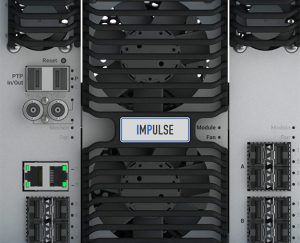Tech Focus: Audio Consoles, Part 1 — Design Evolves To Meet New Exigencies
Mix desks respond to at-home production, cost reduction, IP, other demands
Story Highlights
The large-format audio console remains a staple of remote broadcast production, but substantial changes are taking place under the hood and around its ecosystem. The shift to an IP-based signal path has become increasingly entrenched over the past two years, as has implementation of at-home production (aka REMI), driven by the never-ending need to cut overhead costs (a need likely to be accelerated in coming months in the wake of two massive media consolidations). The two trends came about independently, but they’re now creating synergies.
Tom Knowles, broadcast production manager, Solid State Logic (SSL), cites the ability of IP-based control to streamline the use of at-home productions and to better accommodate (as bandwidth permits) audio embedded in streaming video. He expects that “[IP signal path] will become increasingly important as we move further into immersive formats.”
This comes as consoles are becoming more accommodating of immersive audio formats. Knowles notes that his company’s System T is now adapted for 7.1.4 formats, such as Dolby’s Atmos, and that SSL has partnered with Sennheiser to accommodate the microphone manufacturer’s Ambeo VR transducer. “We’re seeing more immersive-sound demand,” he says, “particularly in the studio and packaged show.”
Smaller, Lighter, Modular
A trend that further supports cost reduction is putting more console functionality into smaller, lighter packages. SSL’s new S500m work surface, introduced at April’s NAB Show as part of the System T line, provides all the flagship features of the System T S500 console in a form factor that is more than 25% lighter and is specifically designed for production-truck and flypack applications.

Calrec’s ImPulse Core is designed to allow customization of existing hardware, as well as multiple uses of single consoles.
Another example of console modularization is Calrec’s 2RU RP1 remote-production system, which enables a remotely located audio-mixing console surface to control all mixing functionality at another location, with the RP1 core managing all the processing for IFB routing and remote monitor mixes. The company’s ImPulse Core, scheduled to ship this fall, will precipitate another inflection point in remote-console capabilities. It will ultimately allow customization of existing hardware, as well as multiple uses of single consoles.
“Calrec’s Apollo and Artemis consoles will be upgradable with ImPulse Core, and it can add flexibility to the way these consoles are used,” says Henry Goodman, director, product development, Calrec. “For instance, you’ll be able to have multiple mix environments from a single ImPulse core. It brings an element of future-proofing with it.”
A software-based approach to console configuration via virtualization and control GUIs also will allow broadcasters to edge into more-modular broadcast environments without the need for completely new hardware.
Goodman says the business case for immersive audio is still evolving, focused for now on “event” broadcasts, such as the Olympics. But, while broadcasters will need economic justification for investments into additional speakers, software can ease how consoles are adapted for the new formats. For instance, he explains, the ImPulse Core will provide the processing power to add immersive monitoring and metering, as well as the ability to configure both input channels and mix outputs in immersive.
As for IP-based signal transport, he says that, although the transport side has been largely developed, thanks to standards like SMPTE ST 2110-30 and AES67, control device discovery and stream management are still a work in progress for many manufacturers.
“You can have a stage box on a golf course, and IP will get the audio back to you, but you need to be able to control the mic gain, too. And you need a way for the network to manage all these new sources effectively,” says Goodman, noting that discovery and connectivity management will require development of the NMOS IS-04 and IS-05 standards from the Advanced Media Workflow Association (AMWA). “Getting to that point will take a little more time.”
Chris Fichera, VP, audio, Group One Ltd, the North American distributor for DiGiCo and Calrec (which also share a parent company with the Allen & Heath and SSL brands), says that, while platforms like the RP1 are contributing to reduced overhead costs for sports broadcasters, including Univision and NBC Sports, they also have the potential to become primary platforms for a range of mid-size collegiate networks. Specifically, he cites PAC-12 Networks as an example.
“Football and basketball bring in the bulk of the revenue, but colleges have so many other sports that have to be covered as part of the school’s athletics. From water polo to field hockey, [they] need to get their airtime,” he says. “At-home tools like the RP1 are well-suited for that role: an A2 plugs the mics in onsite, and the audio gets mixed back at the control room.”
Once the hub of any audio production, the console has evolved into a network node, but still a critical one.
Click here for Tech Focus: Audio Consoles, Part 2 — A Look at Mixing Units for Remote Production
